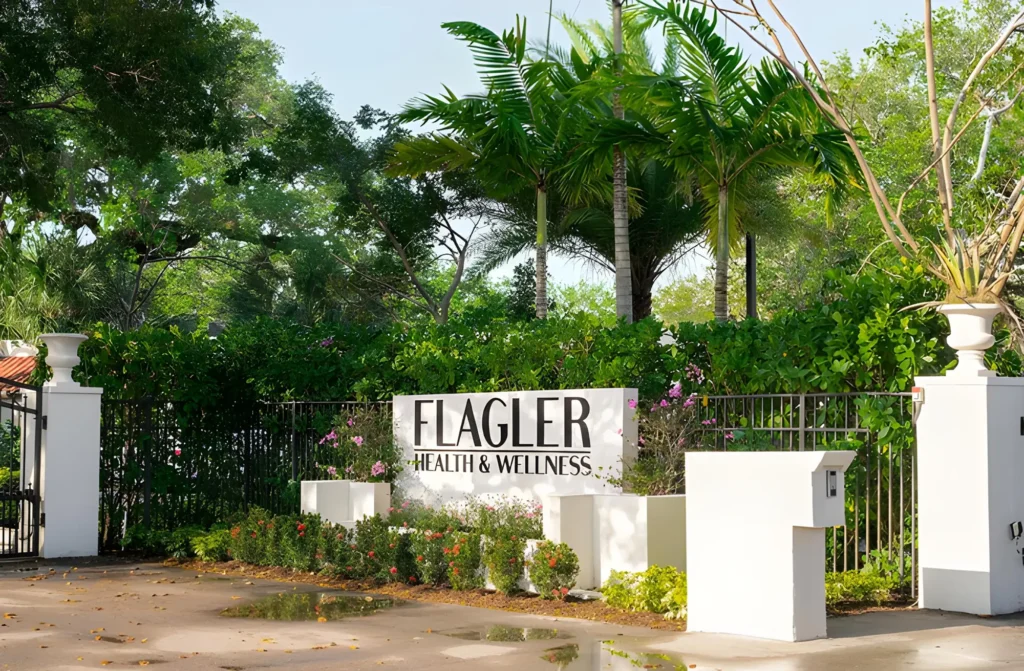Modern addiction treatment in 2025 will transform your odyssey through AI-powered personalization and trauma-informed care. You’ll benefit from real-time monitoring via wearable devices, predictive relapse prevention with 80% accuracy, and integrated therapeutic approaches including psychedelic-assisted therapy. Your treatment plan will combine evidence-based practices, cultural responsiveness, and comprehensive support networks. Advanced technologies and policy changes are reshaping addiction healthcare, creating more effective pathways to sustainable recovery.
The Evolution of Trauma-Informed Recovery Programs

As healthcare systems move toward more extensive addiction treatment models, trauma-informed recovery programs have emerged as a cornerstone of effective care delivery by 2025. Online platforms offer virtual therapy sessions that make treatment more accessible to those seeking help.
Trauma-informed care revolutionizes addiction treatment, marking a vital shift toward comprehensive healing in modern healthcare systems.
You’ll find integrated approaches across mental health services, with culturally responsive treatment strategies that address diverse patient backgrounds and complex trauma histories. The rising popularity of psychedelic-assisted therapy has shown remarkable success in helping patients process deep-seated trauma. A comprehensive 50-hour training equips healthcare providers with essential trauma-informed care skills.
Family focused recovery models now incorporate evidence-backed practices like mindfulness and cognitive restructuring, while specialized training programs guarantee providers can deliver sensitive, trauma-aware care.
The implementation of standardized metrics tracks treatment effectiveness, supporting continuous improvement in care delivery. Universal adoption of trauma-informed principles has transformed treatment environments, reducing triggers and creating safe spaces for healing.
This evolution reflects a deeper understanding of trauma’s role in addiction, integrating neurobiological insights with holistic healing approaches.
Leveraging AI Technology in Personalized Treatment Plans
Advanced AI systems now offer you unprecedented capabilities in recovery monitoring through real-time behavioral tracking and physiological data analysis from wearable devices.
Your treatment plan continuously evolves through AI-driven optimization, which integrates behavioral patterns, medical history, and genetic insights to adjust therapeutic approaches with clinical precision.
The system’s personalized approach helps address the fact that many conditions stem from genetics and environment, making each patient’s journey unique.
You’ll benefit from predictive algorithms that can identify potential relapse triggers up to 48 hours before occurrence, enabling proactive intervention strategies and immediate support deployment.
Mobile applications provide streamlined documentation and scheduling to reduce administrative burden on your healthcare providers while maintaining quality care.
Interactive virtual support tools provide constant engagement and motivation throughout your recovery journey, ensuring you stay connected to your treatment goals.
AI-Powered Recovery Monitoring
The integration of artificial intelligence into addiction recovery monitoring represents a transformative shift in treatment efficacy, combining real-time biometric data with personalized intervention protocols. Through advanced compliance monitoring and caregiver support integration, you’ll experience an extensive treatment approach that adapts to your unique recovery path. The advancement of telehealth platforms has made these AI-powered solutions more accessible to patients seeking treatment from home. Innovative projects like PneumoWave ALERT are revolutionizing overdose prevention through biosensor technology.
AI-powered systems now offer:
- Real-time health metric tracking through wearables that detect physiological triggers and prompt immediate interventions
- Automated risk assessment protocols that reduce hospital readmissions by 47% while streamlining referral processes
- Continuous data analysis that synchronizes with electronic health records to predict relapse risks and optimize treatment outcomes
These technological advances enable 24/7 crisis intervention access and personalized treatment adjustments based on your behavioral patterns, ensuring more effective recovery outcomes while reducing healthcare costs through improved efficiency.
Predictive Relapse Prevention Systems
Modern predictive relapse prevention systems utilize five core AI technologies to revolutionize addiction treatment outcomes. Through AI-driven risk stratification, these systems analyze multimodal data streams including behavioral patterns, physiological markers, and environmental triggers to identify potential relapse indicators before they escalate. Studies have shown that AI-based predictions achieve over 80% accuracy in identifying potential relapses. The integration of advanced analytics enables healthcare providers to make more informed decisions about patient care and treatment strategies.
You’ll benefit from predictive care coordination that combines wearable biosensor data, location-based monitoring, and social engagement analysis to create dynamic prevention plans. The system automatically adjusts your treatment protocols based on real-time risk assessments, activating personalized interventions when needed. Engaging in meaningful activities helps maintain focus and motivation during the recovery process.
Whether it’s scheduling additional therapy sessions, modifying medication dosages, or connecting you with peer support networks, these AI-powered solutions deliver targeted responses to emerging challenges. This thorough approach guarantees you receive the right support at the right time to maintain your recovery pathway.
Digital Treatment Plan Optimization
Pioneering AI technologies now revolutionize addiction treatment through digital optimization of personalized care plans. Through sophisticated algorithm customization, treatment protocols adapt dynamically to your unique needs, integrating real-time data from wearable devices and genetic markers to bolster therapeutic outcomes. Advanced systems streamline clinical documentation while maintaining comprehensive patient records across all care touchpoints.
Patient preference integration guarantees you’ll receive care that aligns with your comfort level and lifestyle requirements, while maintaining clinical efficacy. The system continuously analyzes your progress and automatically adjusts interventions based on:
- Physiological markers from wearable devices tracking stress, sleep, and critical signs
- Behavioral patterns identified through AI-driven analysis of daily activities and engagement
- Treatment response metrics that inform real-time modifications to your care protocol
This data-driven approach enables precise, evidence-based adjustments to your treatment plan, maximizing the potential for successful recovery outcomes.
Navigating Policy Changes in Addiction Healthcare Services
The consolidation of SAMHSA into the Administration for a Healthy America will transform how you’ll access addiction treatment services, with potential disruptions to crisis hotlines and treatment locator tools requiring careful planning for continuity of care.
You’ll need to understand the expanded Medicaid coverage for inpatient substance use disorder treatment, now allowing up to 30 days annually in mental health facilities, while maneuvering new parity rules that prohibit insurers from restricting addiction services more than medical care. The implementation of evidence-based treatment guidelines will standardize care protocols across all facilities receiving federal funding. Insurers must now conduct comparative analyses of treatment limitations to ensure equal access to behavioral health services. The reduction of 20,000 positions through layoffs and early retirements may impact the availability of treatment services.
The restructuring of federal behavioral health programs will shift billions in funding allocations, directly impacting your ability to access treatment resources and requiring proactive engagement with alternative support systems during this shift.
Policy Impact On Treatment
Significant policy changes in 2025’s addiction healthcare terrain have created both opportunities and challenges for treatment providers. You’ll notice parity-based coverage expansion through strengthened MHPAEA enforcement, while workforce development strategies adapt to new federal guidelines.
The restructuring of SAMHSA under AHA affects your treatment operations in three key ways:
- Insurance providers must now justify any limitations on behavioral health coverage, ensuring equal access to addiction services
- Crisis care systems are integrating with 988 Lifeline, expanding your referral networks and emergency response options
- Federal funding streams for treatment programs continue under AHA oversight, though with modified distribution mechanisms
These changes require your careful attention to compliance while maximizing opportunities for augmented service delivery within the new policy framework.
Funding Shifts and Access
While federal funding for addiction treatment undergoes substantial restructuring in 2025, you’ll need to navigate complex shifts in grant allocations and access mechanisms. The proposed $8.1 billion SAMHSA budget faces uncertainty, while community provider relationships strain under potential program closures and grant delays.
Treatment integration challenges intensify as funding streams merge mental health and substance use services. You’ll encounter new requirements under the MHPAEA parity rule, which mandates equal coverage between behavioral and medical benefits. The emerging stimulant crisis necessitates flexible funding beyond traditional opioid-focused grants, particularly as meth and cocaine overdoses rise. To maintain service continuity, you’ll need to monitor the potential establishment of a permanent opioid epidemic fund while exploring alternative funding sources through state-level initiatives and expanded CCBHC programs.
Crisis Response Restructuring
A sweeping transformation of addiction crisis response systems emerges in 2025 as HHS consolidates SAMHSA into the Administration for a Healthy America (AHA). You’ll encounter standardized protocols emphasizing telehealth service capacity and amplified inter agency collaboration protocols under the new framework.
The restructuring introduces three critical changes to crisis response:
- Centralized oversight through AHA, streamlining emergency intervention and recovery support services
- State-managed implementation of mobile crisis teams with integrated telehealth capabilities
- Mandatory cross-sector coordination between healthcare providers, law enforcement, and social services
You’ll need to adapt to these evidence-based guidelines while maintaining continuous care through the crisis continuum. The 2025 National Crisis Guidelines establish clear metrics for service delivery, requiring real-time data tracking and outcome measurement to uphold system effectiveness and equitable access.
Evidence-Based Therapeutic Strategies for Modern Recovery
Modern addiction treatment has evolved beyond traditional models to adopt a diverse array of evidence-based therapeutic strategies. You’ll find groundbreaking approaches like psychedelic-assisted therapy showing remarkable effectiveness in addressing trauma and reframing addictive patterns, particularly in treatment-resistant cases. These harm reduction approaches are now complemented by trauma-informed care that recognizes addiction as a potential response to underlying psychological wounds.
What’s transforming the recovery scenery is the integration of holistic lifestyle interventions with traditional methods. You’ll benefit from thorough treatment combining medication-assisted therapy, mindfulness practices, and personalized care plans that respect your cultural identity. This evidence-based framework utilizes emerging pharmacological innovations like GLP1 agonists while incorporating meditation, nutrition therapy, and community support for sustainable recovery outcomes.
Understanding Federal Support and Resource Distribution

Federal support for addiction treatment operates through an intricate network of agencies and funding mechanisms that shape recovery possibilities nationwide. You’ll find resource distribution challenges affecting how effectively programs reach communities, particularly with proposed $28.6 billion discretionary spending cuts potentially impacting federal SUD initiatives.
Federal addiction treatment funding faces mounting pressure as budget cuts threaten crucial support networks serving vulnerable communities nationwide.
Key funding streams direct resources through:
- SAMHSA Block Grants supporting state-level priorities and medication-assisted treatment
- HRSA’s rural-focused programs including RCORP Implementation Grants ($1M per community)
- VA Substance Use Treatment Grants targeting veteran-specific care needs
Budget allocation trade-offs continue influencing program effectiveness, especially in underserved areas. While continuing resolutions maintain baseline funding through 2025, you’ll need to navigate multiple funding sources from federal grants to state programs to optimize treatment access and support services in your community.
The Role of Crisis Response in Treatment Success
Transformative crisis response systems serve as critical intersection points between acute intervention and long-term recovery success, with evidence demonstrating their essential role in treatment outcomes. You’ll find that community-based solutions now integrate seamlessly through the three-part foundation of contact, respond, and safe place, maximizing engagement during vulnerable moments.
Cost-effective interventions emerge through mobile crisis teams and stabilization units, diverting individuals from expensive emergency departments while providing immediate access to medication-assisted treatment. You’re seeing bolstered outcomes through data-driven design and same-day intake protocols, supported by the 988 Crisis Lifeline infrastructure.
The implementation of hub-and-spoke models guarantees you’ll have access to extensive care, while telehealth integration and mobile treatment units extend service reach into previously underserved areas.
Building Sustainable Community-Based Recovery Networks

Successful community-based recovery networks now integrate multiple evidence-based approaches through coordinated access points, demonstrating measurable improvements in treatment outcomes. You’ll find interconnected systems that prioritize immediate access while addressing cultural and social determinants of addiction through peer-led support networks and community-based harm reduction initiatives.
Key components of sustainable recovery networks include:
- Regional Access Centrals that coordinate detox, outpatient, and residential services through unified systems
- SMART Recovery’s evidence-based, peer-led support groups emphasizing behavioral strategies and self-empowerment
- Initial Nations Treatment Centres providing culturally safe programs with traditional healing practices
These integrated approaches amplify treatment accessibility while reducing systemic barriers. The interagency collaboration between public health, housing, and social services effectively addresses root causes of addiction through coordinated intervention strategies.
Frequently Asked Questions
How Does Genetic Predisposition Influence the Effectiveness of Ai-Driven Addiction Treatment?
Your genetic makeup profoundly impacts how you’ll respond to addiction treatments. Through genetic screening approaches, AI systems can identify specific variants affecting drug metabolism and neural pathways.
This allows for personalized treatment protocols customized to your genetic profile. You’ll receive optimized medication dosages and targeted interventions based on your predicted response patterns, leading to more effective outcomes. The AI continuously adapts your treatment plan as new genetic insights emerge.
What Percentage of Patients Maintain Sobriety After Trauma-Informed Care Versus Traditional Methods?
Research shows you’re more likely to maintain sobriety with trauma-informed care compared to traditional methods. When incorporating stress reduction techniques and personalized treatment plans, trauma-informed care achieves up to 85% one-year sobriety rates with structured aftercare, versus less than 20% with traditional approaches.
Adding peer support enhances success by 40%, while family therapy increases chances by 35%. These outcomes demonstrate the effectiveness of extensive, trauma-sensitive treatment strategies in supporting long-term recovery.
Can Virtual Reality Therapy Replace Traditional Counseling in Addiction Treatment Programs?
While VR therapy can’t fully replace traditional counseling, you’ll find it serves as a powerful complementary tool. Research shows that combining VR’s immersive experiences with conventional therapy improves treatment outcomes.
The cognitive stimulation provided through VR helps you practice coping skills in controlled environments, with studies showing a 67% remission rate compared to 43% in traditional outpatient care. However, you’ll benefit most from integrating VR within an extensive treatment program.
How Do Seasonal Changes Affect Relapse Rates in Community-Based Recovery Programs?
Seasonal changes profoundly impact your recovery trek through diverse weather conditions and environmental shifts. You’ll face higher relapse risks during winter holidays due to increased social pressures and decreased meeting attendance.
Spring showcases enhanced outcomes, with 67% of participants reporting better success rates. Your community support networks typically adjust their programs seasonally, offering supplementary meetings during high-risk periods and incorporating weather-appropriate activities to maintain engagement throughout the year.
What Role Do Gut Microbiomes Play in Addiction Recovery and Treatment Success?
Your gut microbiome profoundly influences addiction recovery through the gut-brain axis, which directly impacts craving intensity and withdrawal symptoms. Microbial metabolites regulate neurotransmitter production, affecting your mood and decision-making processes.
When you maintain a healthy microbiome through diet and probiotics, you’ll strengthen your recovery by improving dopamine regulation and reducing inflammation. Research shows that disrupted gut bacteria can increase your relapse risk, making microbiome health essential for treatment success.










